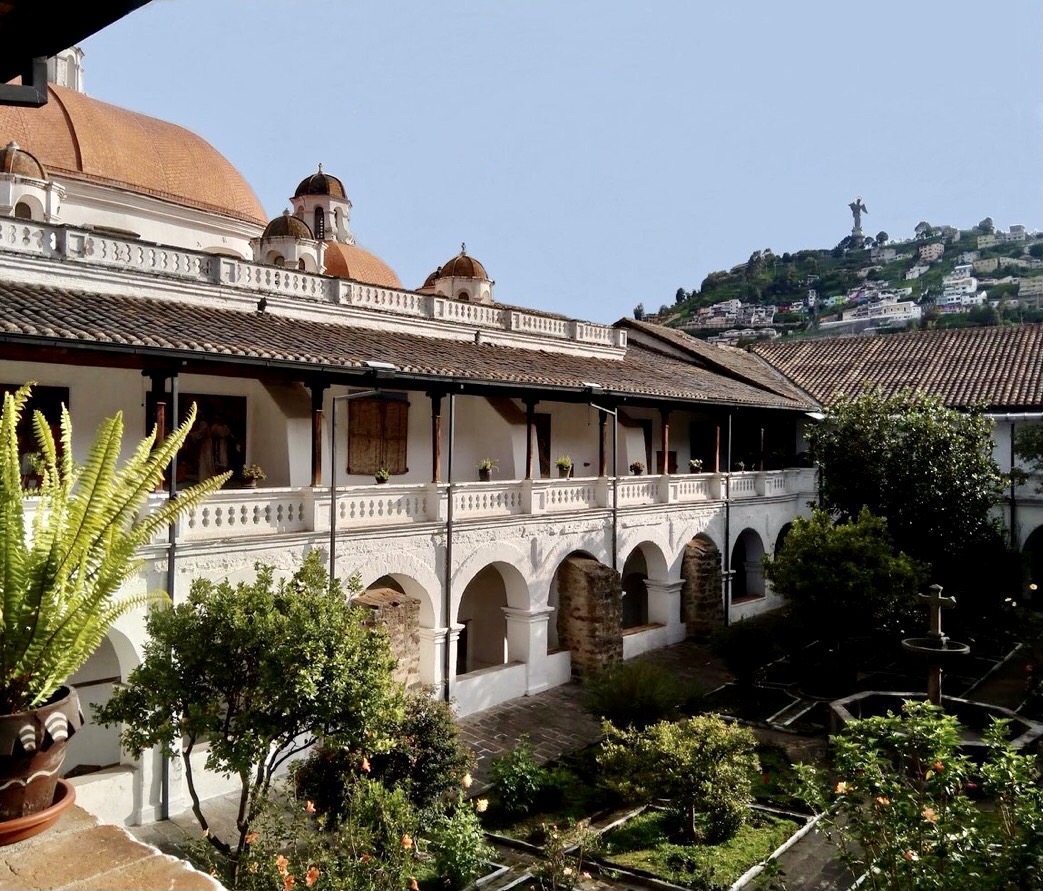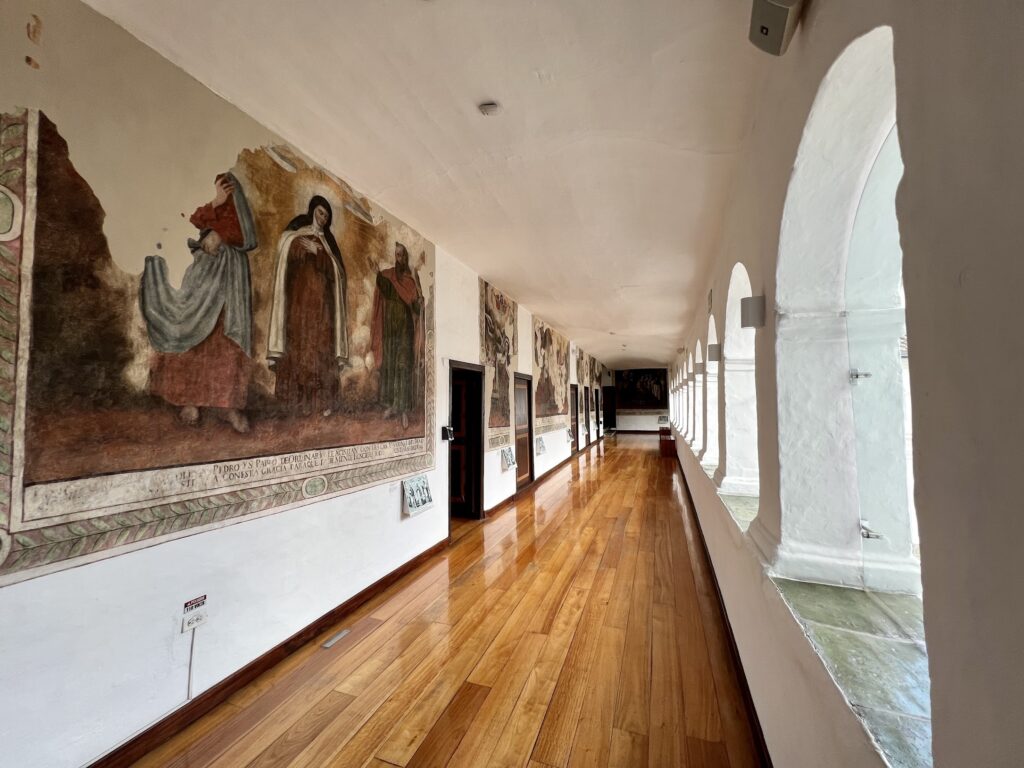Español
La clave de gran parte del desarrollo socioeconómico quiteño estuvo en la fundación de los MONASTERIOS; estos cenobios, considerados como “plazas fuertes» de la fe diseminadas en el corto entramado de la urbe y dispersas en el dilatado territorio de la Audiencia, no sirvieron exclusivamente como puntos de formación teológica y pastoral, de retiro espiritual o de vida contemplativa; porque fueron también, centros educativos y de enseñanza de bellas artes y de artes aplicadas. Estas actividades místicas, formativas y educativas aglutinaron a su alrededor a la colectividad quiteña, que se alimentó de la sabia artística y de su producción: primores en bordado, macramé, crochet, talqueado, calado y ornamentos para la liturgia.
Adicionalmente tómese en cuenta que la conquista había dejado a muchas mujeres viudas y pocas casadas, también se requería un espacio para sanar esta herida social.


English
The key to much of Quito’s socioeconomic development lay in the founding of monasteries. These monasteries, considered «strongholds» of faith scattered throughout the narrow urban area and dispersed throughout the vast territory of the Audiencia, did not serve exclusively as centers of theological and pastoral training, spiritual retreats, or contemplative life; they were also educational centers and teaching centers for the fine and applied arts. These mystical, formative, and educational activities united the Quito community, which was nourished by the artistic wisdom and its production: exquisite embroidery, macramé, crochet, talc-work, lacework, and liturgical ornaments.
Additionally, it should be noted that the conquest had left many women widowed and few married; a space was also needed to heal this social wound.